Essential Metrics to Monitor for Achieving E-Commerce Triumph
3. Customer Acquisition Cost (CAC)
4. Customer Lifetime Value (CLV)
6. Traffic
8. Return Rate
9. Gross Margin
10. Sales by Channel
In the wild world of E-Commerce, success is often measured in the blink of an eye. But fear not, because we’ve got the ultimate cheat sheet to help you keep score. Welcome to “What Are the Key Metrics to Track for E-Commerce Success?” – your all-access pass to the digital scoreboard of your online business. Think of these 10 key metrics as the secret recipe to cooking up a delicious feast of success. From the appetizing Conversion Rate to the sweet Sales by Channel, we’ll be your sous-chefs, dishing out the perfect blend of ingredients that will keep your E-Commerce venture sizzling with success. So, grab your apron, and let’s start cooking up a storm in the E-Commerce kitchen!
1. Conversion Rate
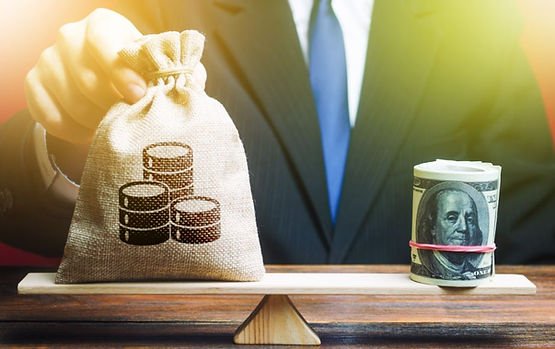
Picture this, you’re at a party, and the host has laid out a sumptuous spread of your favorite snacks. You notice a bowl of spicy jalapeño cheese puffs and you’re instantly drawn to it. But then, you find out it’s all style and no substance – bland and tasteless. You’re disappointed, right? This is exactly what happens when visitors land on your e-commerce site but don’t convert into customers. You don’t want your website to be a bowl of lackluster cheese puffs, do you? So, let’s dive into the world of ‘Conversion Rate’.
Firstly, let’s demystify the term. Conversion Rate, in e-commerce jargon, refers to the percentage of your website’s total traffic that makes a purchase. Or in layman’s terms, how many of the partygoers are enjoying your jalapeño cheese puffs? Here are some spicy ways to measure and enhance your Conversion Rate:
Track Your Conversion Rate:
This one’s a no-brainer. You’ll need an analytics tool like Google Analytics to keep an eye on your conversion rates. Measure it over different periods – daily, weekly, monthly – to spot trends and patterns.
A/B Testing:
It’s like a culinary experiment for your website. Try out different website elements, like CTAs, color schemes, or product descriptions, and see which ones your customers prefer. Remember, your website should be a gourmet treat for the eyes!
Enhance User Experience:
Make sure your website is as smooth and satisfying as a bowl of creamy risotto. Easy navigation, fast loading times, and intuitive site design can significantly improve your conversion rates.
Craft Compelling Product Descriptions:
These are your secret recipe. A well-written, persuasive product description can be the difference between a mere browse and a purchase. So, make sure your product descriptions are as enticing as a tantalizing truffle pasta.
Streamline Checkout Process:
You don’t want your customers to abandon their carts because the checkout process was as complicated as a 5-star recipe, do you? Simplify it. The fewer steps, the better. Trust us, your customers will thank you.
Offer Multiple Payment Options:
Everyone has a preferred payment method. Just like some prefer a fork over chopsticks, some may prefer PayPal over credit cards. Cater to all tastes to ensure no customer walks away because their preferred payment method wasn’t available.
Foster Trust:
Just like any successful dinner party, trust is key in e-commerce. Display security badges, customer reviews, and clear return policies to foster a sense of trust with your visitors. This can significantly increase your conversion rates.
Retargeting Campaigns:
Sometimes, a customer needs a little nudge, like a tempting dessert menu after a satisfying meal. Retargeting campaigns serve to remind customers of what they’re missing out on, bringing them back to complete the purchase.
A high conversion rate is a testament to the effectiveness of your e-commerce site. It’s the culinary triumph at your dinner party, the sign that your guests are enjoying not just the jalapeño cheese puffs, but the whole gourmet spread. So, spice up your e-commerce strategies, and watch your conversion rates soar!
2. Average Order Value (AOV)
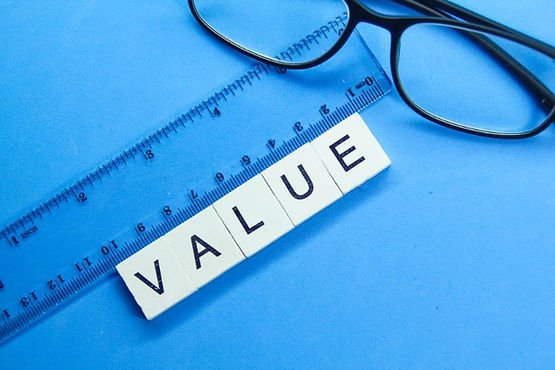
Let’s dive into the realm of ‘Average Order Value’, or as I like to call it, the e-commerce version of ‘going big or going home’. AOV is your retail rollercoaster, a thrilling ride that tells you how much your customers are spending on each transaction. This metric is as crucial to your e-commerce success as popcorn is to a blockbuster movie night.
So, how do you calculate AOV? It’s as easy as pie, or in this case, a slice of your revenue pie. Simply divide your total revenue by the number of orders, and voilà, you’ve got your AOV. Now that we’ve got the basics covered, let’s look at some strategies to crank up your AOV, or as we like to say in e-commerce lingo, supersize that order!
Upselling:
This is the classic ‘Do you want fries with that?’ move. Suggest higher-priced alternatives or add-ons that complement the product in the shopping cart. It’s a smooth move that often leads to larger-order values.
Bundling:
Make your customers an offer they can’t refuse with attractive product bundles. It’s like serving a three-course meal at the price of two. Who can resist that?
Free Shipping Threshold:
This is your golden ticket. Set a free shipping threshold above your current AOV. It’s like an irresistible dessert that’s free if you order a bit more.
Loyalty Programs:
Reward your repeat customers with points or discounts. It’s like a refill of their favorite soda – they’re likely to buy more when they know they’re getting a sweet deal.
Flash Sales or Limited Time Offers:
Create a sense of urgency with time-bound deals. It’s like the last piece of pizza – customers tend to buy more when they know time’s running out.
Personalized Recommendations:
Use customer data to suggest relevant products. It’s like having a personal waiter recommend the best dishes – customers love a personalized experience and often end up spending more.
Consider these strategies your secret ingredients to cook up a storm in your e-commerce kitchen. A higher AOV means more revenue from the same number of customers, so make sure you’re not just filling the cart, but filling it upright. After all, the more, the merrier, right?
3. Customer Acquisition Cost (CAC)

Picture this: you’re throwing the ultimate dinner party. You’ve got your snacks lined up, your main course is a culinary delight, and your dessert is nothing short of decadent. But guess what? Hosting this party comes with a cost. You’ve got to buy the ingredients, possibly hire a chef, and let’s not forget the cleaning up afterward! It’s quite similar in the world of e-commerce where your party guests are your customers, and the party cost? That’s your ‘Customer Acquisition Cost’ or CAC.
CAC is the cost of convincing a potential customer to buy a product or service from you. In simpler terms, it’s like the price you pay to convince a friend that your party is the one they absolutely can’t miss!
So, how do you calculate your CAC? All you need to do is add up your marketing and sales costs and divide it by the number of customers acquired in the period you’re looking at. And voilà, there’s your CAC! However, just like any good party host, you want to make sure your party is a hit without breaking the bank. So, here are some nifty ways to optimize your CAC:
Optimize Your Ad Campaigns:
It’s like sending out the right party invitations. Targeted, well-designed ads can attract more customers for the same budget.
Improve Your Website’s SEO:
This is your online equivalent of word-of-mouth. A well-optimized website can pull in organic traffic, reducing your reliance on paid campaigns.
Leverage Social Media:
Just as a popular friend can bring in more guests to your party, a strong social media presence can help attract more customers without incurring high costs.
Referral Programs:
Encourage your existing customers to bring their friends. It’s cheaper and often results in loyal customers.
Remarketing Campaigns:
Don’t forget the guests who left your party early! Re-engage with visitors who didn’t convert the first time around.
Remember, the lower your CAC, the better your profits. So, put on your party hat, roll up your sleeves, and get ready to throw a profitable e-commerce party that has your cash register ringing!
4. Customer Lifetime Value (CLV)
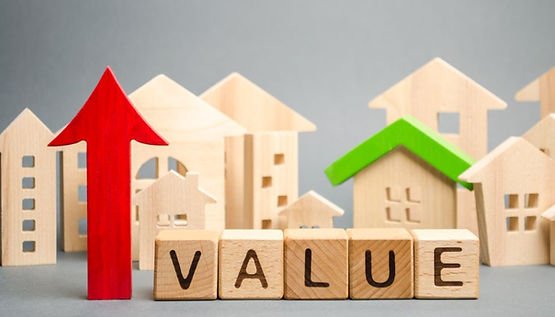
Imagine you’re hosting a series of fabulous dinner parties. There are guests who pop by once, enjoy a meal, and never return. But then, there are others who keep coming back, party after party. These repeat guests, my friends, are your golden geese in the e-commerce world. They contribute to what we call the ‘Customer Lifetime Value’ or CLV.
CLV is the total revenue you can expect from a customer during their relationship with your business. It’s the sum of all the dinner parties they’ll attend and all the delicious meals they’ll enjoy at your table.
So, how do you calculate CLV? It’s as simple as multiplying the customer value (average purchase value x purchase frequency) by the average customer lifespan. And just like that, you’ve got your CLV! But how do you ensure that your guests keep coming back, party after party? Here are some tricks to boost your CLV:
Remarkable Customer Service:
Treat your customers like VIPs at your party. A happy customer is more likely to return, and even bring friends!
Loyalty Programs:
Reward your repeat guests with points or discounts. It’s like giving them a free dessert – they’ll be eager to come back for more.
Personalization:
Tailor your product recommendations based on your customer’s preferences. It’s like serving their favorite dish at every party, making them feel special and valued.
Regular Communication:
Keep your customers informed about new products, sales, or company news. It’s like sending out regular party invites – they’ll appreciate being in the loop.
Quality Products:
This one’s a no-brainer. If your food is good, your guests will keep coming back. Similarly, if your products are top-notch, your customers will continue to choose you over competitors.
Remember, it’s not just about getting new customers, but also about keeping the ones you have. After all, the party’s always more fun with friends who love coming back! So, pull out all the stops and make sure your e-commerce business is the one party your customers never want to miss.
5. Cart Abandonment Rate
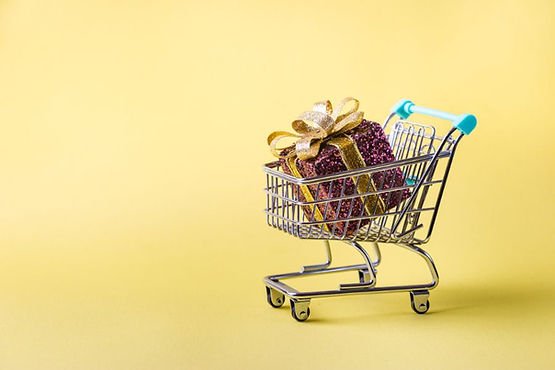
Picture this: you’re at a buffet. You load up your plate with an array of mouth-watering dishes. But just as you’re about to head to your table, you spot a long, snaking queue for the checkout. Disheartened, you leave your plate behind and walk away. This dear readers, is the e-commerce equivalent of ‘Cart Abandonment‘.
Cart Abandonment Rate refers to the percentage of shoppers who add items to their online shopping cart but leave before completing the purchase. It’s like the pile of half-filled plates left behind at a buffet.
Calculating this rate is as simple as dividing the total number of completed transactions by the total number of shopping carts created, subtracting the result from one, and multiplying by 100. And voilà, you have your Cart Abandonment Rate! But the real question is, how do you keep your guests from leaving their plates behind and walking away? Here are some strategies to lower your Cart Abandonment Rate:
Simplify Checkout Process:
Nobody likes long queues, whether at a buffet or on an e-commerce site. Make your checkout process as quick and painless as possible.
Transparent Pricing:
No one likes surprise costs. Be upfront about shipping fees, taxes, or any other additional costs to avoid shocking customers at checkout.
Offer Guest Checkout:
Not everyone wants to create an account. Offering a guest checkout option can reduce friction and encourage customers to complete their purchases.
Multiple Payment Options:
It’s like offering a variety of drinks at your party. Everyone has a preference, so cater to them all.
Trust Signals:
Display security badges, customer reviews, and clear return policies. It’s like showing your guests that you’ve got a clean kitchen – they’re more likely to trust you with their meal.
Remember, a lower Cart Abandonment Rate means more completed sales. It’s like ensuring every guest at your buffet leaves with a full stomach and a smile. So, serve up a seamless shopping experience and watch those carts roll all the way to checkout!
6. Traffic
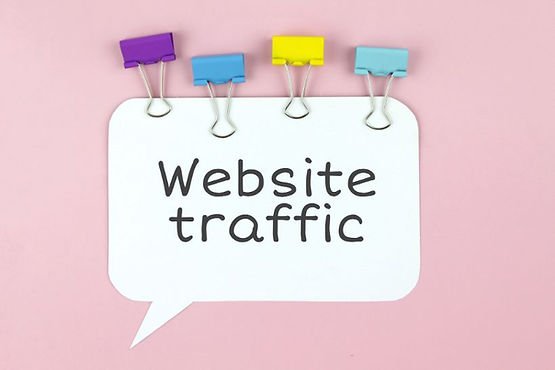
Imagine throwing a grand gala, the kind of party that’s the talk of the town. You’ve got the best food, the best music, and the best ambiance. But it’s all for naught if you don’t have guests streaming in. The same principle applies to your e-commerce site. You need ‘traffic’ – the constant stream of visitors that are as vital to your online store as partygoers are to your gala.
Traffic, in e-commerce terms, refers to the number of people visiting your website. It’s like the guest list at your party. High traffic doesn’t always guarantee success, but it’s certainly a prerequisite. After all, a party’s not a party without guests, right?
Here are some clever ways to increase traffic to your e-commerce site, turning it into the hottest party in town:
Search Engine Optimization (SEO):
It’s like sending out the perfect party invitations. Optimize your website to rank higher in search engine results and draw in more organic visitors.
Social Media Marketing:
This is your online megaphone. Use platforms like Facebook, Instagram, and Twitter to reach out to potential customers and guide them to your website.
Content Marketing:
Think of this as your party entertainment. Engaging blogs, videos, or podcasts can draw visitors to your site and keep them engaged.
Pay-Per-Click (PPC) Advertising:
It’s like placing a billboard for your party in the busiest part of town. Paid ads can attract targeted traffic to your site.
Email Marketing:
This is your personal invitation. Regular newsletters or promotional emails can remind customers of your site and encourage repeat visits.
Collaborations and Influencer Marketing:
Team up with popular personalities or other businesses to drive their followers to your site. It’s like having a celebrity guest at your party – everyone wants to be there!
Remember, traffic is the lifeblood of your e-commerce site. It’s like the bustling crowd at your party, making it lively and vibrant. So, roll out the red carpet and get ready to welcome a surge of visitors to your online store!
7. Net Promoter Score (NPS)

Imagine throwing a party, and it’s such a blast that your guests can’t stop talking about it. They rave about it to their friends, family, their pet parrot, and even their friendly neighborhood barista. They’re not just party-goers, they’re your party promoters! This, my friends, is what the ‘Net Promoter Score’ or NPS is all about in the world of e-commerce.
NPS is a metric that measures customer loyalty by asking one simple question: “On a scale of 0 to 10, how likely are you to recommend our company/product/service to a friend or colleague?” It’s like asking your guests, “On a scale of 0 to 10, how likely are you to recommend our party to your friends?”
Calculating NPS is a piece of cake. Group your respondents into Detractors (0-6), Passives (7-8), and Promoters (9-10). Subtract the percentage of Detractors from the percentage of Promoters, and you’ve got your NPS! But how do you turn your guests into party promoters? Here are a few strategies:
Provide Exceptional Customer Service:
Be the host with the most! A positive experience can turn customers into promoters.
Request Feedback:
Ask for feedback and act on it. It’s like asking your guests for party suggestions and then incorporating them into your next bash.
Follow-Up Communication:
Reach out to your customers post-purchase. It’s like sending a thank-you note after your party – it makes your guests feel appreciated.
Reward Loyalty:
Implement a loyalty program that rewards repeat purchases. It’s like giving your frequent guests VIP treatment – they’ll be more likely to sing your praises.
Exceed Expectations:
Deliver more than you promise. It’s like promising a fun party and then delivering a night that your guests will remember forever!
High NPS means your customers are not just satisfied, they’re your fans. And fans, just like thrilled party-goers, can’t wait to tell everyone about the amazing time they had. So, aim for that high NPS and turn your e-commerce customers into your biggest promoters!
8. Return Rate

Imagine throwing a party where you hand out party favors. However, as the night progresses, you notice a growing pile of returned favors. They didn’t like them, didn’t need them, or simply changed their minds. Welcome to the world of e-commerce ‘Return Rate’.
Return Rate is the percentage of products sold that are later returned by customers. It’s like the pile of unwanted party favors at your gala.
Calculating Return Rate is straightforward: divide the total number of returned items by the total number of items sold, then multiply by 100. And there you have it, your Return Rate! But how do you avoid the pile of unwanted party favors? Here are some strategies to lower your Return Rate:
Product Descriptions:
Make sure your product descriptions and images are accurate and detailed. It’s like describing your party favor in detail so your guests know what they’re getting.
Customer Reviews:
Encourage customers to leave reviews about the product. It’s like having previous party-goers vouch for the awesomeness of your party favors.
Quality Control:
Ensure your products meet high-quality standards. It’s like making sure your party favors are top-notch, so no one wants to return them.
Flexible Exchange Policies:
Sometimes, a customer might just need a different size or color. Make exchanges easy, and you might reduce the number of returns.
Excellent Customer Service:
Provide clear instructions for product use and care. Also, have a team ready to answer queries and solve issues. It’s like having a team at your party to ensure everyone’s having a good time.
Remember, a lower Return Rate means happier customers and more kept sales. It’s like ensuring all your guests treasure their party favors, making your party a hit. So, aim to reduce your Return Rate and keep your e-commerce party going strong!
9. Gross Margin
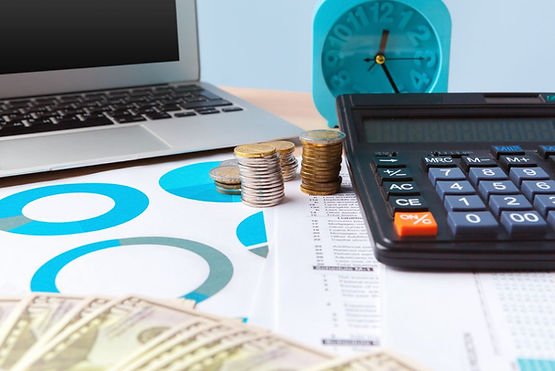
Picture this: You’re throwing a grand feast, and your guests are happily paying for the delightful spread. But once the bills are settled, and the party’s over, you sit down to calculate your profits. You subtract the cost of food, decorations, and entertainment from your earnings. What remains is your party’s ‘Gross Margin’.
In e-commerce terms, Gross Margin is the percentage of total sales revenue that the company retains after incurring the direct costs associated with producing the goods it sells. It’s the slice of the pie you keep after you’ve paid off the pizza delivery guy.
Calculating Gross Margin is easy as pie: subtract the cost of goods sold (COGS) from total revenue, divide the result by total revenue, and then multiply by 100. And just like that, you have your Gross Margin! But how can you increase your Gross Margin? How can you keep a larger slice of the pie? Here are some strategies:
Cost Efficiency:
Find ways to reduce your production costs. It’s like finding a cheaper supplier for your party snacks without compromising on taste.
Pricing Strategy:
Set prices that not only cover your costs but also generate a healthy profit. It’s like pricing your party tickets in a way that covers your expenses and leaves you with a tidy sum.
Upselling and Cross-selling:
Encourage customers to buy higher-priced items or add-ons. It’s like convincing your guests to opt for the premium buffet spread instead of the regular one.
Inventory Management:
Avoid overstocking or understocking. It’s like ensuring you have just the right amount of food for your party – not so much that it goes to waste, and not so little that your guests go hungry.
A higher Gross Margin means your business is more financially healthy. It’s like making a profit from your party, which can fund even grander feasts in the future. So, aim for that sweet spot with your Gross Margin and keep your e-commerce celebration in full swing!
10. Sales by Channel
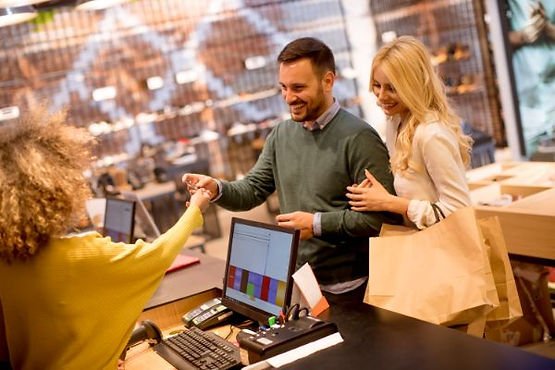
Imagine throwing a party that’s such a hit that people all over the world are talking about it. They’re discussing it on social media, writing about it in blogs, and sharing pictures of it with their friends. Your party’s success isn’t just limited to your local area. It’s a global phenomenon. This is what ‘Sales by Channel’ is all about in the world of e-commerce.
Sales by Channel refers to the different platforms or channels through which customers make purchases. It’s like the different ways your party-goers can buy their tickets, whether it’s through a website, a mobile app, or in person.
Tracking Sales by Channel is essential for any e-commerce business because it helps you understand where your customers are coming from and which channels are generating the most revenue. This information can help you optimize your sales strategies and focus your efforts where it counts. Here are some common sales channels:
Online Store:
This is your e-commerce website, the heart of your online business. It’s like the main entrance to your party.
Marketplaces:
These are third-party platforms like Amazon, Etsy, or eBay, where you can list your products for sale. It’s like having your party listed on popular event websites.
Social Media:
You can use social media platforms like Instagram, Facebook, or Pinterest to drive sales to your online store. It’s like promoting your party on social media, attracting a wider audience.
Mobile Apps:
More and more customers are using mobile apps to shop. It’s like having a dedicated app for your party tickets, making it easy for guests to purchase them on the go.
In-person Sales:
If you have a physical store or pop-up shop, in-person sales can be a significant source of revenue. It’s like having a ticket booth for your party, making it convenient for people passing by to buy tickets.
Tracking Sales by Channel is crucial for e-commerce success. It’s like understanding where your party-goers are coming from and which channels are the most effective in driving revenue. So, keep a close eye on your sales channels and make sure your e-commerce party is a hit, no matter where your guests are coming from. With personalized guidance from seasoned experts, you’ll learn to fine-tune your strategies and make your online business the life of the party!

